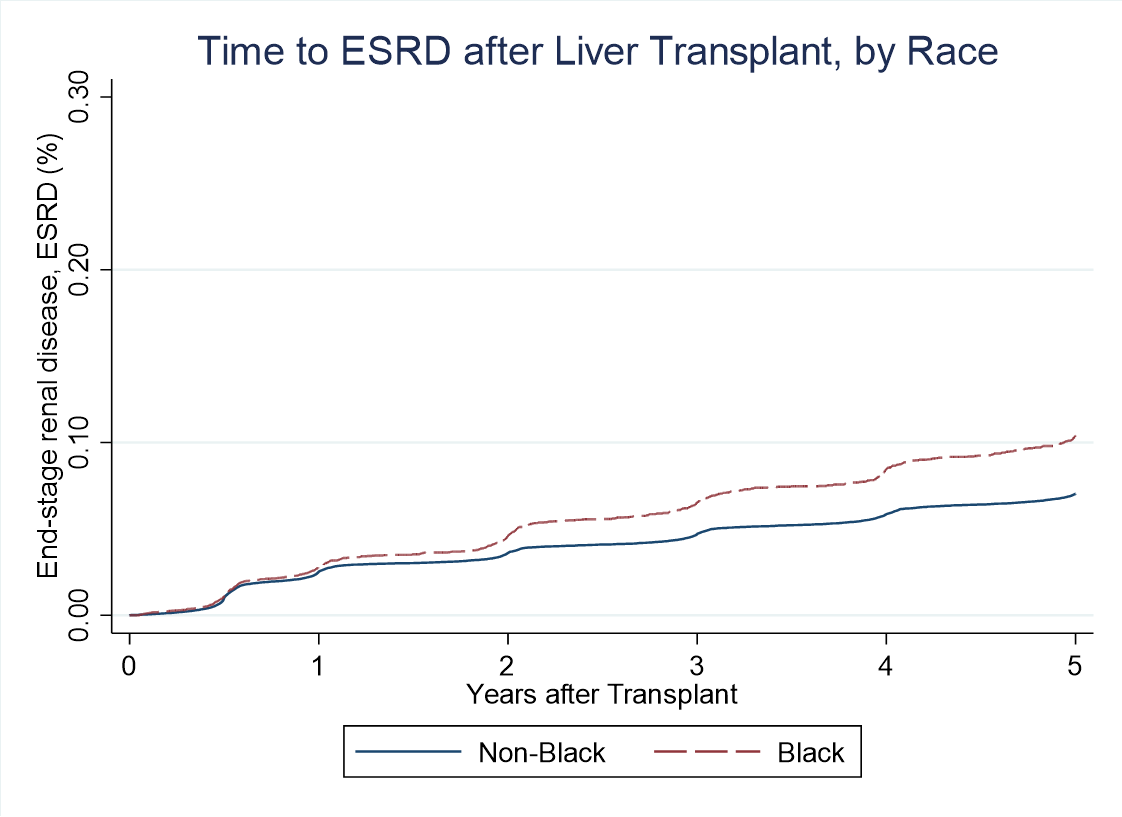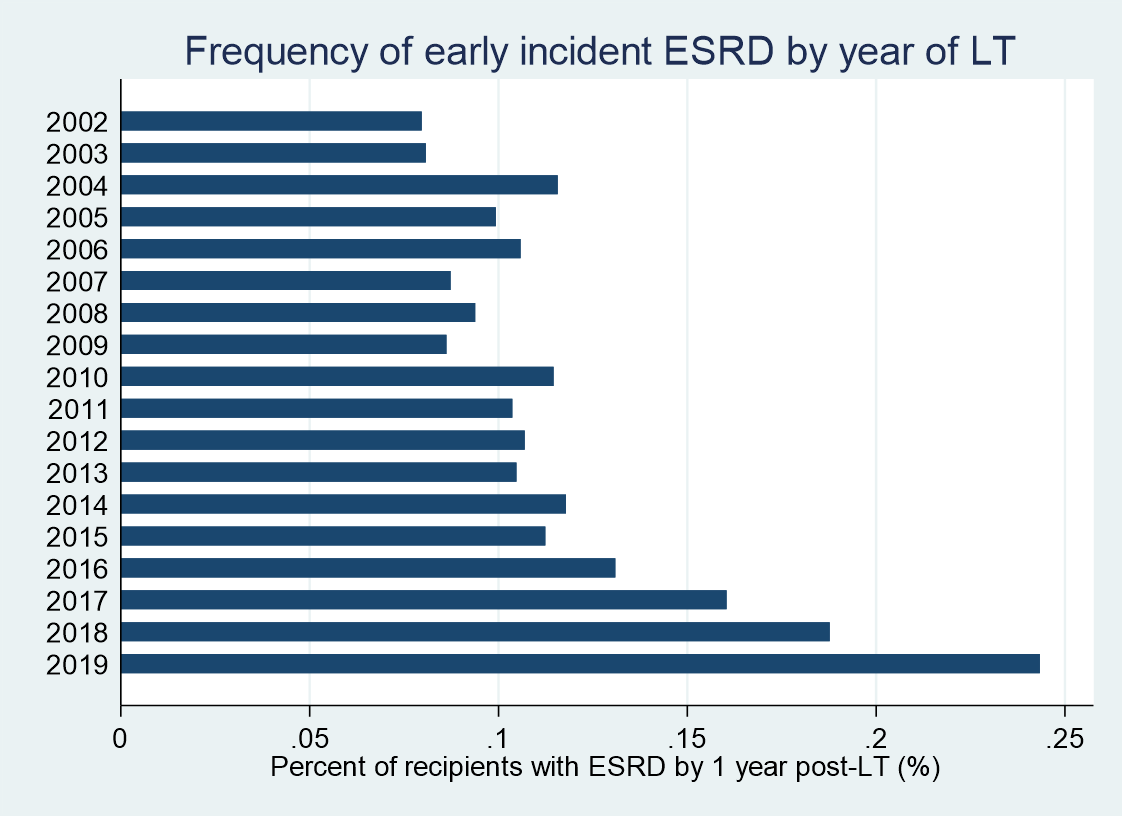Secular Trends in Development of ESRD Following Liver Transplant
1Johns Hopkins University School of Medicine, Baltimore, MD, 2Johns Hopkins School of Medicine, Baltimore, MD, 3Johns Hopkins University, Baltimore, MD
Meeting: 2022 American Transplant Congress
Abstract number: 1072
Keywords: Kidney, Liver transplantation, Outcome
Topic: Clinical Science » Liver » 52 - Liver: Kidney Issues in Liver Transplantation
Session Information
Session Name: Liver: Kidney Issues in Liver Transplantation
Session Type: Poster Abstract
Date: Sunday, June 5, 2022
Session Time: 7:00pm-8:00pm
 Presentation Time: 7:00pm-8:00pm
Presentation Time: 7:00pm-8:00pm
Location: Hynes Halls C & D
*Purpose: End-stage renal disease (ESRD) post-liver transplant (LT) is associated with increased mortality, but ESRD incidence and risk factors in LT recipients (LTRs) remain poorly defined. Single-center studies suggest higher post-LT ESRD risk among Black LTRs, but this has not been evaluated in national data, and other sociodemographic risk factors have not been defined.
*Methods: Using SRTR data for 91,589 adult, first-time, deceased-donor LTRs 2002-2020 with pre-LT eGFR>15, we evaluated temporal trends in post-LT ESRD. We evaluated recipient characteristics (race, age, sex, MELD, pre-LT eGFR, HCV, diabetes, education, insurance) associated with the incidence of and time to post-LT ESRD (eGFR<20, kidney transplant or listing) using multivariable Cox regression. We calculated change in proportion of LTRs with ESRD within 1 year post-LT using logistic regression.
*Results: LTRs with vs. without post-LT ESRD were more likely to be Black (11.7% vs. 7.7%), be HCV-positive (42.0% vs. 39.7%), have diabetes (40.8% vs. 23.7%), and have pre-LT CKD (48.9% vs. 25.6%), and less likely to be male (64.8% vs. 68.2%) or complete high school (HS, 46.4% vs. 50.5%). In a multivariable model, Black race (aHR 1.501.631.78), HCV (aHR 1.061.121.18), educational attainment (aHR 0.880.930.99 >HS vs.
*Conclusions: Recipient characteristics such as Black race and diabetes are associated with increased post-LT ESRD risk. However, they alone do not explain the increase in 1-year ESRD risk post-LT since 2017, which warrants further investigation.
| Recipient characteristic | Overall(N=91,589) | No ESRD post-LT(N=83,181) | ESRD post-LT(N=8,408) |
| Age (years), median (IQR) | 56 (50, 62) | 56 (50, 62) | 56 (50, 62) |
| Black race | 8.1% | 7.7% | 11.7% |
| Male | 67.8% | 68.2% | 64.8% |
| HCV | 39.9% | 39.7% | 42.0% |
| Diabetes | 25.3% | 23.7% | 40.8% |
| Pre-LT eGFR, median (IQR) | 82.6 (56.5, 100.4) | 84.4 (59.0, 100.8) | 60.5 (39.2, 88.1) |
| Pre-LT CKD stage >3 CKD | 27.7% | 25.6% | 48.9% |
To cite this abstract in AMA style:
Ruck JM, Zeiser L, Massie A, Segev D, King E. Secular Trends in Development of ESRD Following Liver Transplant [abstract]. Am J Transplant. 2022; 22 (suppl 3). https://atcmeetingabstracts.com/abstract/secular-trends-in-development-of-esrd-following-liver-transplant/. Accessed December 15, 2025.« Back to 2022 American Transplant Congress


